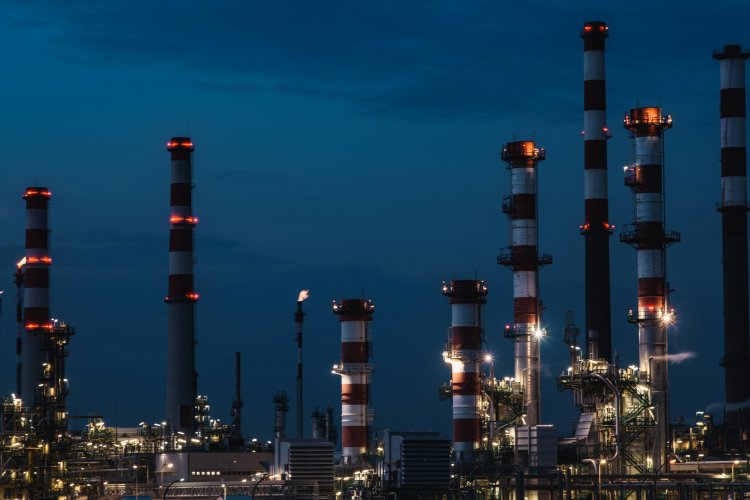
The escalating conflict between Iran and Israel has once again exposed the global economy’s vulnerability to geopolitical flare-ups in the Middle East. Crude oil prices surged dramatically, with Brent crude jumping 7% on Friday and a further 13% on Monday—marking the sharpest daily rise since Russia invaded Ukraine in 2022. However, brent prices eased of a little to $71.58 a barrel by Monday evening. In India, crude oil settled at Rs 6,119.00 per 1 BBL.
Analysts warn that prices could soar to $150 per barrel in a worst-case scenario.
This spike threatens to ripple across the global economy, fuelling inflation and disrupting sectors from transport and tourism to agriculture and manufacturing. For India, which imports nearly 80% of its crude oil needs, the stakes are especially high. Though India buys little oil directly from Iran, it remains acutely sensitive to global supply disruptions and price shocks.
READ | Digital adoption by SMEs key to Indian economy’s $5 trillion goal
Oil shock returns to centre stage
The impact is already visible. The benchmark indices on Dalal Street weakened as fears of rising input costs spooked investors. Meanwhile, shares of upstream producers like ONGC and Oil India rallied, while oil marketing firms such as IOCL, BPCL, and HPCL saw declines. Tyre companies and aviation stocks also came under pressure, reflecting the broader market anxiety over rising energy costs.
For a country like India—where oil is both a strategic and economic lifeline—the implications are manifold. A prolonged price surge will squeeze margins across energy-intensive sectors such as cement, steel, fertilisers, and petrochemicals. Small and medium enterprises, with limited ability to pass on rising costs, are particularly vulnerable.
The price hike will also hit the average consumer. Petrol and diesel costs are the most visible consequence, but more expensive energy feeds into the price of virtually everything—from fertilisers and food production to logistics and retail. High logistics costs, in turn, disrupt supply chains and raise prices of essentials.
Historically, India has suffered significantly during oil shocks. In 2022, during the height of the Russia-Ukraine war, Brent crude spiked to $139 per barrel, pushing India’s current account deficit higher and fuelling domestic inflation. The current crisis carries similar risks. If crude remains elevated, corporate profitability will take a hit, while the government’s fiscal calculations may need urgent revision.
Global market jitters and flashpoints
The geopolitical dimension of the crisis cannot be overstated. The Strait of Hormuz—through which nearly 17 million barrels of oil pass daily—remains a chokepoint of global energy flows. Any disruption here, analysts at Rabobank warn, could push crude prices above $120 per barrel and trigger panic buying that drives prices to $150. Attacks on infrastructure or a potential blockade could have cascading effects on LNG exports as well.
The knock-on effects are being felt globally. TTF gas prices in the Netherlands spiked 5% following recent Israeli airstrikes, underlining market sensitivity to conflict in the region. If disruptions extend to major exporters like Saudi Arabia or the UAE, energy markets could see a prolonged period of volatility, with consequences for both developed and emerging economies.
In the United States, higher oil prices may paradoxically offer some benefits in the short term—as the country is now a net exporter of oil—but they also risk fuelling inflation and delaying the Federal Reserve’s plans to cut interest rates. According to Capital Economics, a return to $100 per barrel oil could add a full percentage point to inflation in advanced economies.
China, which imports around 1.5 million barrels per day from Iran, also faces potential disruption. A cut-off in Iranian supplies would force Beijing’s refiners to turn to alternative sources, inflating freight rates and insurance premiums. S&P Global warns that this could narrow the Brent-Dubai spread, compressing refining margins across Asia.
Europe, already reeling from elevated energy prices, could be hit particularly hard if LNG flows from Qatar and Oman are interrupted. Rising TTF prices would add to energy inflation, burdening both households and industry.
Crude oil prices: Volatile but not unmanageable
Much now depends on whether the current escalation morphs into a wider regional war or remains contained under international pressure. Some analysts expect oil prices to climb another 10% in the short term, but argue that prices could stabilise just as quickly if diplomatic channels prevail.
There are, however, counterbalancing forces at play. OPEC+ recently announced a surprise production hike, indicating that the market is not fundamentally short on supply. A new report by Emkay Global suggests that the global oil market remains relatively well-supplied and could absorb some reduction in Iranian exports.
Nonetheless, the markets remain jittery. In a world already battling high interest rates, slow growth, and fragile supply chains, another oil shock is the last thing economies need. For policymakers, the challenge will be to navigate these external shocks without derailing the domestic recovery or fuelling inflation. As history has shown, oil shocks tend to expose the weak spots in global economic architecture—and the current crisis may be no exception.
